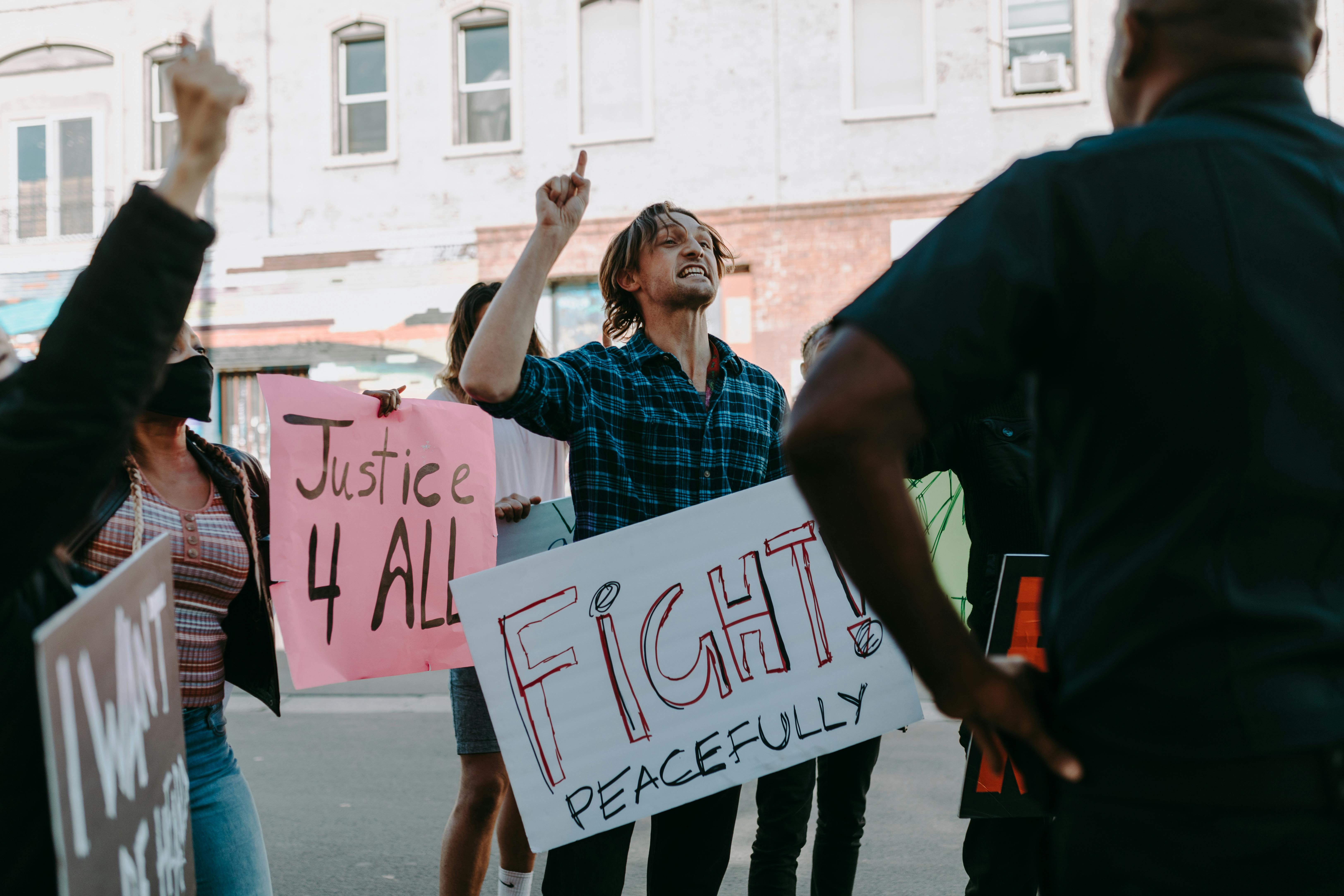The historical process of fighting violence is the prevention and control of crime and the minimization of risk.
In this context, the studies originated and developed by the military and civilians who seek to reach the state of the art necessary to combat violence can be efficient and thus reach tolerable levels for the well-being of the community.
In the international arena from the 1960s, various initiatives arose to combat the increase in violence and the consequences derived from this situation. Among various attempts, it was observed that the solution was to increase police-community interaction, focusing especially on respect for society.
The new idea of a police directly to the needs of the connected actors, looking for a greater integration and recognizing that the citizen who lives in a zone of social risk, must be seen in a respectful way. Then the community police was born.
Technological innovations, the operational basis of economic globalization, were quickly adopted by criminal organizations. Two factors contributed decisively to the new world order of organized crime.
The unification of the European Community (EC), which materializes in the 1990s (now called the European Union – EU), and the end of the Union of Soviet Socialist Republics (USSR).
The end of the borders, in the countries that joined the EU and the absolute lack of political and military control over the vast territory of the former Soviet Union, opened a corridor from the Baltic to the Pacific, for the disposal of the products of organizations such as the Sicilian Mafia (Cosa Nostra), the Russian Mafia, the Chinese Triads, the (Japanese) Yakuza and the Colombian Cartel.
This movement, the world, involved agreements and understandings, taking into account a “support bank” already prepared by the ‘tax havens’, and prospered in the financial markets under the mark of three circumstances:
a) The drop in business profitability of traditional products;
b) the excess of dollars due to the existence of payment deficits and domestic debt increased in the US for at least 50 years, to the same extent that the dollar assumed the status of world currency.
c) The process of privatization of the economy of the former USSR in the 1990s under the government of Boris Yeltsin, through which the Russian mafias came to dominate 70% of the financial system of the Russian Federation.
The available holders of shares opened a highly relevant ‘entry door’ to the Russian mafia in the global financial system. The crossover with the global activity of organized crime in its less impressive version occurred in successive operations, balance sheets and fraud accounts. Two others also point to the phenomenon: the deployment of an electronic commerce system, based on Internet operations, and the privatization of international postal services – the largest of which is US-based FedEx.
In this context, there are other macroelements to consider: the issue of patents and the control of biodiversity – from the battlefields of international diplomacy to the confines of the Amazon.
In the shadow of the State, official criminals operate a biopiracy policy closely linked to organized crime circles. From a geopolitical perspective, Miami and Los Angeles (USA) appear as ‘capitals’ of the organized crime strategy for Latin America, Europe, Africa and Asia, especially in the two most relevant aspects: – Drug and arms trafficking.
Among the countries that launder the most money is the US, where 50% of all financial transactions originate from drug trafficking, terrorism, kidnapping, smuggling, corruption and other illegal activities. The different networks and global connections, which operate with the support of ultrasound technology, flee, even for now, from the scope of the calls of Financial Intelligence Units (FIU – Financial Intelligence Unit), which act globally articulated in the so-called Egmont group.
In its latest report, the group notes: The delay in money laundering investigations means that few scenarios involving new technologies or techniques – such as Internet laundering, smart cards, or online banking transactions – have been brought forward. We anticipate that, over the years, more and more cases involving these technologies will come to the attention of law enforcement.
The available literature on organized crime is only now beginning to address cases of money laundering with ‘dirty’ schemes based on high technology. As money grows in volume of transactions in the real economy, more organized crime networks and we go through the vast network of virtual money. It is precisely at this size that it is difficult to identify the “dirty capital”, obtained through the sale of drugs and weapons, for example, which is “washed” daily and receives the blessings of the market, breaking the economies of capitalist countries. central, and the so-called emerging countries, without being bothered by anyone.
The money laundering activity is presented either as a half-performance of concatenated acts in time and space, a perspective in which a certain purpose is achieved. These actions are linked to concealment and integration. From a strategic action of organized crime, concealment and disguise are fundamental movements of the integration action, when the ‘dirty money’ returns to the economy as a legitimate investment market. At this stage, it is rarely possible to recover the assets generated by illicit activities.
In a worsening of the socioeconomic conditions of the countries classified as “emerging” in all the continents, three elements can be highlighted:
a) The fall in the profitability of traditional businesses, a world in which products are produced and services are provided, the so-called real economy;
(b) The increase in poverty in the world, with the deconstruction of the growing world of work;
c) Lack of control of financial markets and the flow of capital, by states and multilateral organizations such as the World Bank (BIRF), the International Monetary Fund (IMF) and the World Trade Organization (WTO) and organizations multilateral organizations linked to the United Nations (A).
Drug trafficking occupies a first hierarchical place in the markets controlled by organized crime. The first is that of drugs, mainly cocaine, heroin and synthetics, such as ecstasy and amphetamines. It is estimated that the business goes from $300 to 500 billion.
The second is arms trafficking. Also, human trafficking for prostitution, organ trade, slave labor. Then there are other sectors such as corruption and money laundering that permeate all the work of organized crime. A very acceptable figure, calculated by the United Nations, is 400 billion dollars (more than the world oil industry), employing almost 20 million people and serving 70 to 100 million consumers.
Perhaps half of these users are in the United States, the world’s largest drug market, and the largest market for everything else. Authorities and experts dealing with the different ways of combating organized crime, from multilateral organizations such as the United Nations Organization (UN), intelligence agencies and repression of democratic non-governmental organizations, see the ‘crime lords’ with a kind of ‘holding’ The concept is taken from the modern theory of government and was appropriated by mafias and cartels to manage and maintain high-profile mega-businesses.
And all this, apart from the war and the repression still concentrated in the hands of the State, today extremely weakened by the reduction and dismantling of the state machinery, the world, the result of the policies led in the late 1980s by the United States. . and Great Britain.
It operates as a holding company. The group that comes to drugs is usually linked to arms trafficking, mainly because it is a business that does not involve money, only merchandise: I will give you 20 kg of cocaine in exchange for a weapon. This happens on the border between Argentina, Bolivia, Brazil and Paraguay, especially with the product of cargo theft, cars and trucks. Often there is no money in between. Therefore, organized crime operates more like a holding company than a business sector.
Arms Trafficking Arms smuggling, the operation part of a perfectly legal transaction (the purchase of arms in the trade for export), is a hidden level, but still ‘legal’ and returns to the country illegally, smuggled by criminal organizations dedicated in resale slums and on the outskirts of large Brazilian cities. There is also an aggravating factor in the world of arms trafficking, the arsenal of Russia, whose economy is completely dominated by the mafia: ‘According to the Minister of the Interior of the Russian Federation, approximately 5,700 mafia groups control 70% of the country’s banks. and most of its exports of oil, natural gas, strategic minerals, and raw materials.
It is necessary to distinguish, in advance, arms trafficking from illicit arms trafficking.
The first, practiced by drug traffickers linked to criminal organizations, and has involved wholesale sales, or in quantity and type (quality) that involves a lot of money. But illegal trade, typically retail, thrives in the shadow of unconventional agencies and authorities in charge of public security, rather than arms trafficking, the business of illegal arms trade is nonsense. The police seized a .38 from someone, a small pistol, close to the heavy weaponry that exists today. This weapon remains housed in the judiciary, the police for years and the state often loses control over it.
The arms trafficking scheme operates in reverse to that of drugs, in general: first a purchase is made, legally, then the product is exported to finally smuggle it back into the country, passing directly into the hands of criminal organizations. At the beginning of 1991, an event revealed to the international community the magnitude of the problem, especially the control exercised by the Russian mafia in such sensitive sectors of that country’s economy, such as the financial system.
The nuclear issue – it can never be stressed enough – is one of the most serious problems. In 1991. For $250 thousand he was able to buy a medium size nuclear warhead (approximately 700 pounds). “What probably prevents the use of nuclear weapons by organized crime is, on the one hand, the volume of destruction caused and the possible violent retaliation and, on the other hand, the lack of a strategic reason.
The main risk, therefore, involves religious fanatics and groups. The world arms production figures, despite the secrecy surrounding the trade war industry, for alleged reasons of State, indicate that the five permanent members of the UN Security Council – the United States, China, Russia, France and the United Kingdom – account for almost 85% of the world stock of weapons. The United States exports about 15% of its production, the United Kingdom and France, 25% and 20% respectively.
Nearly 80% of sales go to smaller, poorer countries, especially problem areas in the developing world.
What fuels trafficking on a global scale is often the production of small arms, whose manufacturing technology is simple and relatively affordable. Unlike complex weapons systems like missiles: “To give you an idea of the numbers, the development of a new air-to-air missile costs about $1.5 billion to $2 billion.



